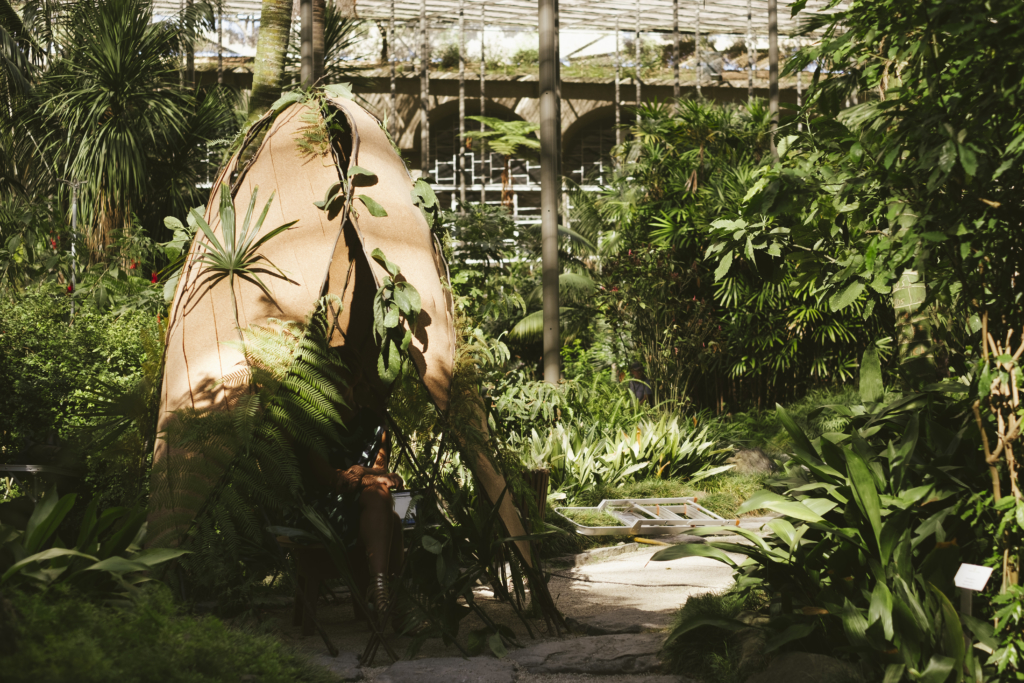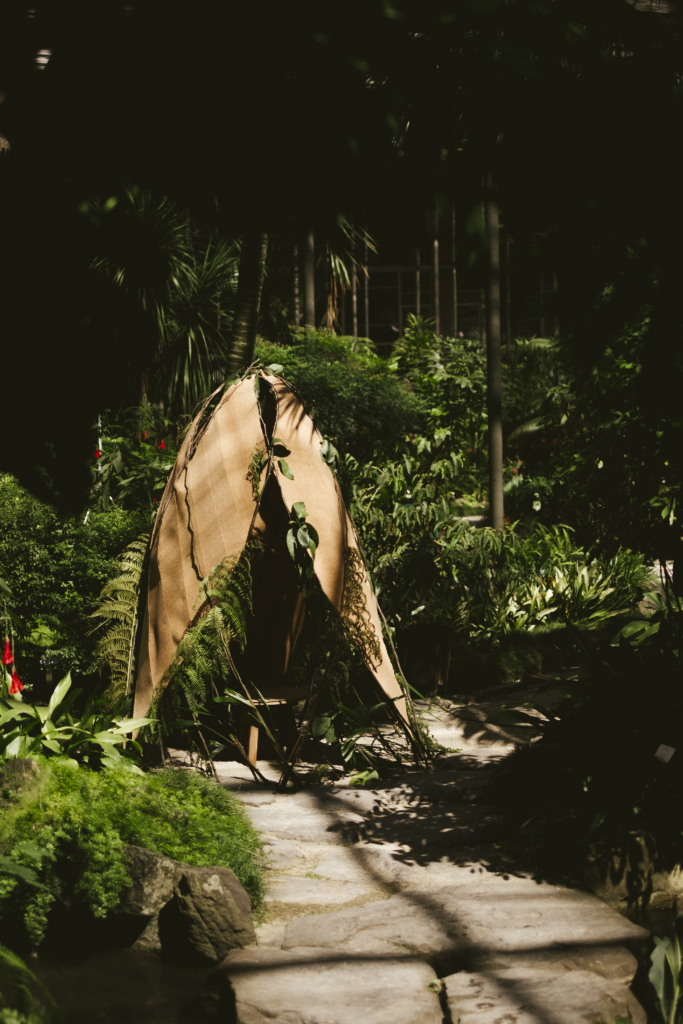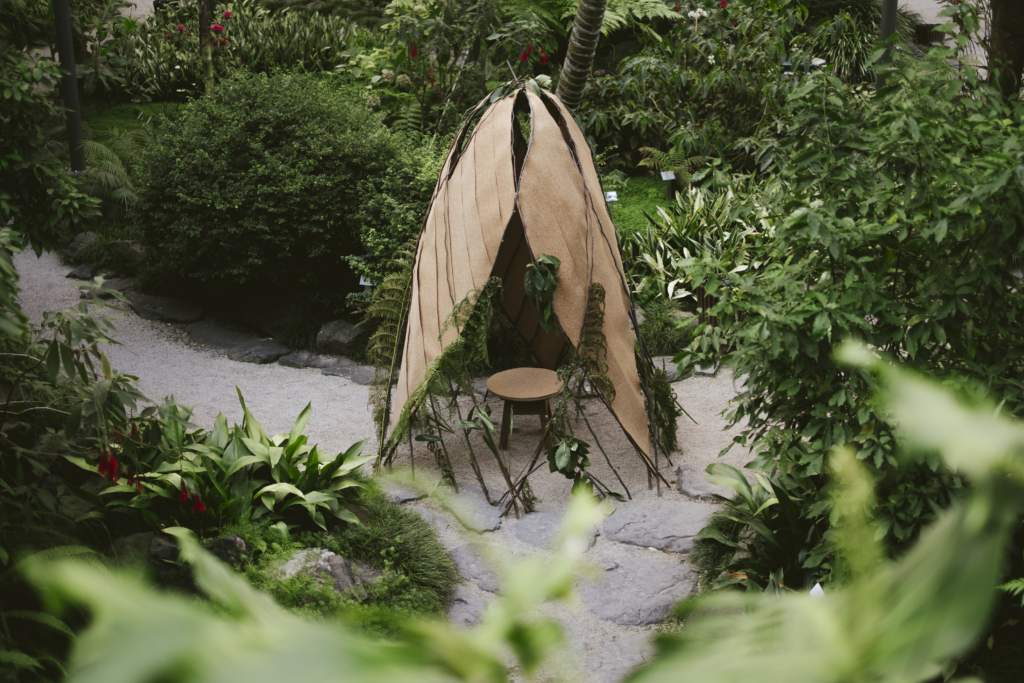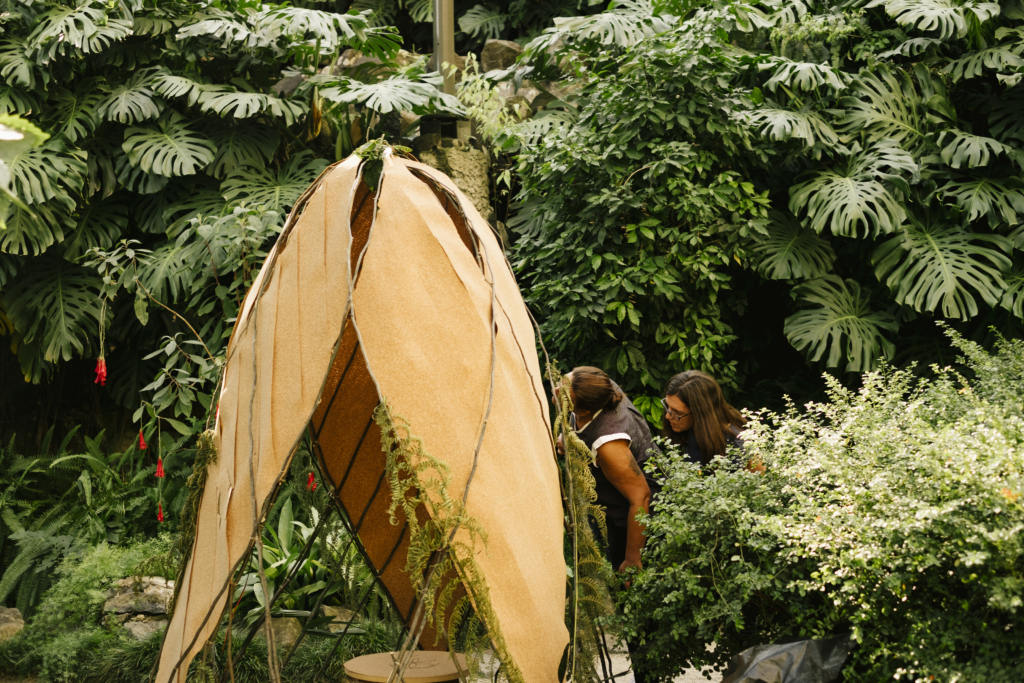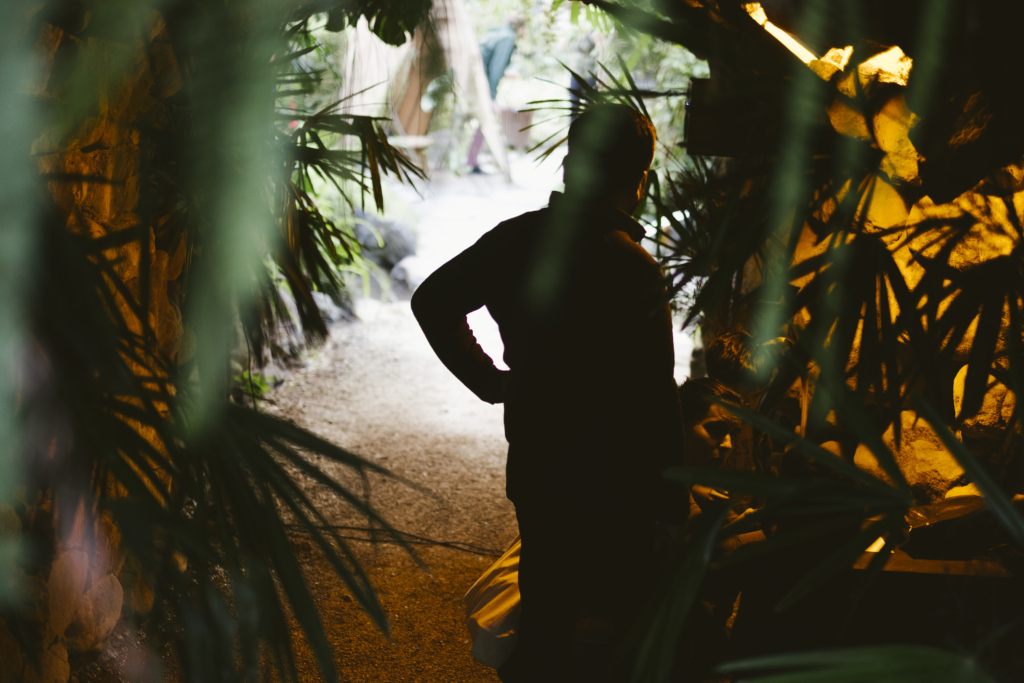In a microcosm with hundreds of plant species, watering infrastructure and stone architecture in the middle of a city, what do we listen to? The installation Passagem explored modes of listening to this ecology through location recordings and modulation of acoustic phenomena. It aimed to enhance an active, physical and immersive listening, to attune with the environment and with ourselves. Passagem created a walking path with two different interrelated forms of experience, and engaged the audience in two kinds of sensory variation:
– The tunnel – an intervention in an existing space – a soundscape installation in resonance with the acoustic space of a passageway;
– The zome – the creation of a new architectural space – an architecture installation as a relatively quiet moment for attunement.
The purpose for these sensory variations was to draw the public’s attention to subtile forces at work in the place, usually gone unnoticed. This intervention enhanced the water presence (waterfalls, watering infrastructure, water drops, water channels) through location recordings, which were amplified in the acoustic space of the stone tunnel, a cold, dark, humid passage. The vibratory forces of water turned into a deep roaring sound and modulated specific resonant frequencies. The tunnel became an immersive passageway and the magnification of environmental sounds produced a sense of physicality, entering into sympathetic vibration with the audience’s body and mind. As an extension, the zome was built in a strategic place, where the path coming out of the tunnel divided into two paths. It embraced the audience coming out of the tunnel, engaging another form of experience. The zome offered a cosy, dry, warm shelter, to turn the experience to the interior of self.
Photos Vera Marmelo. Sound recording Mestre André.
